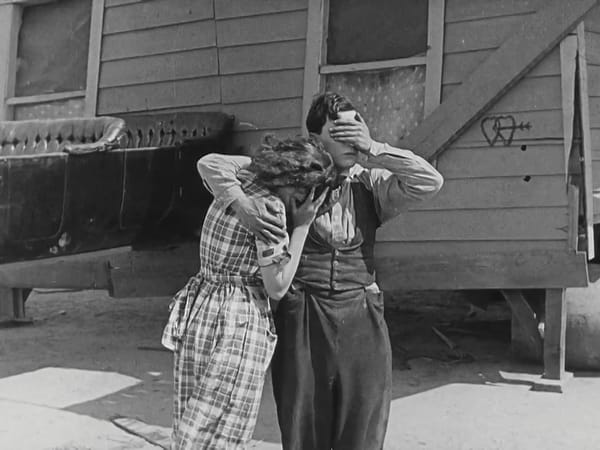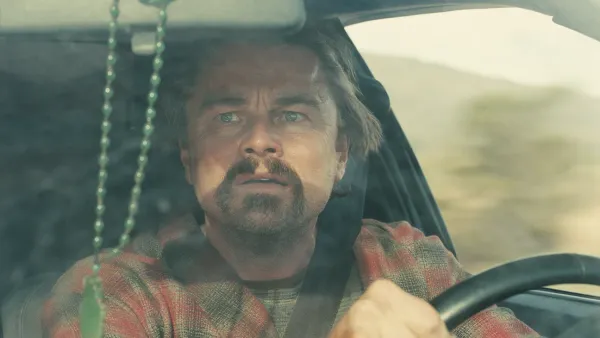Who's invited to The Party?
On The Party and the politics of who’s looking at problematic art
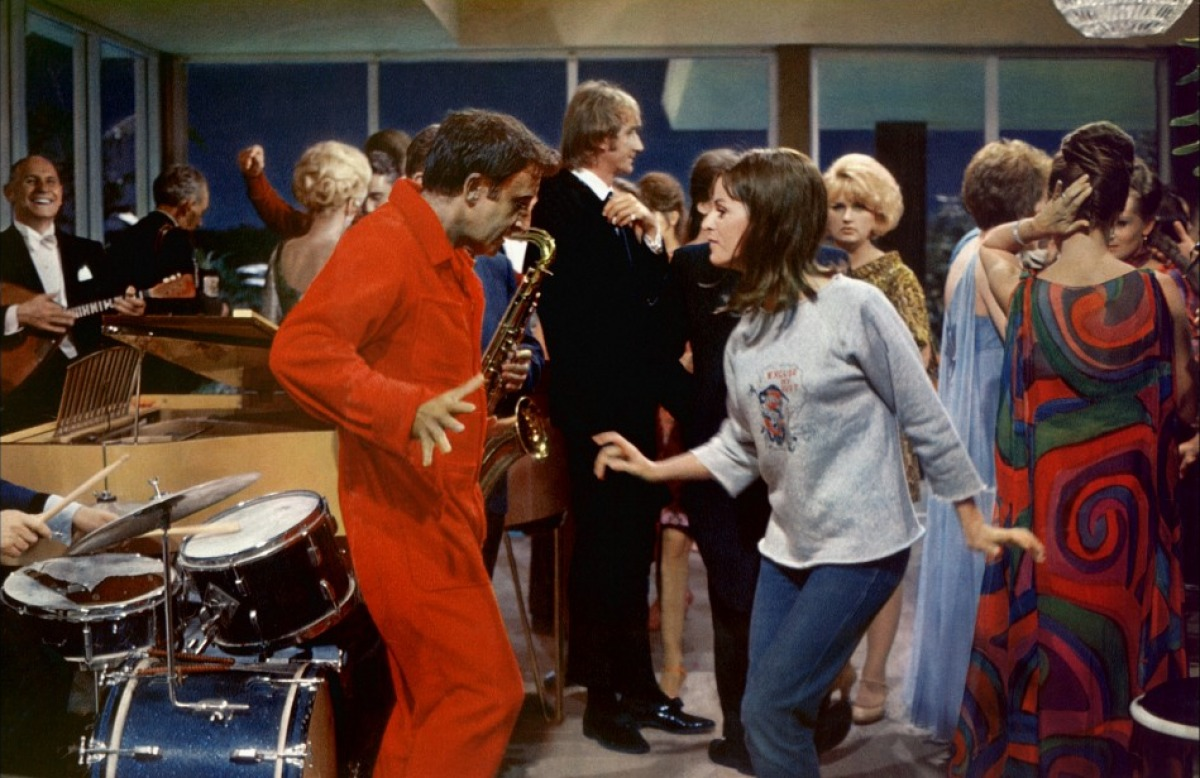
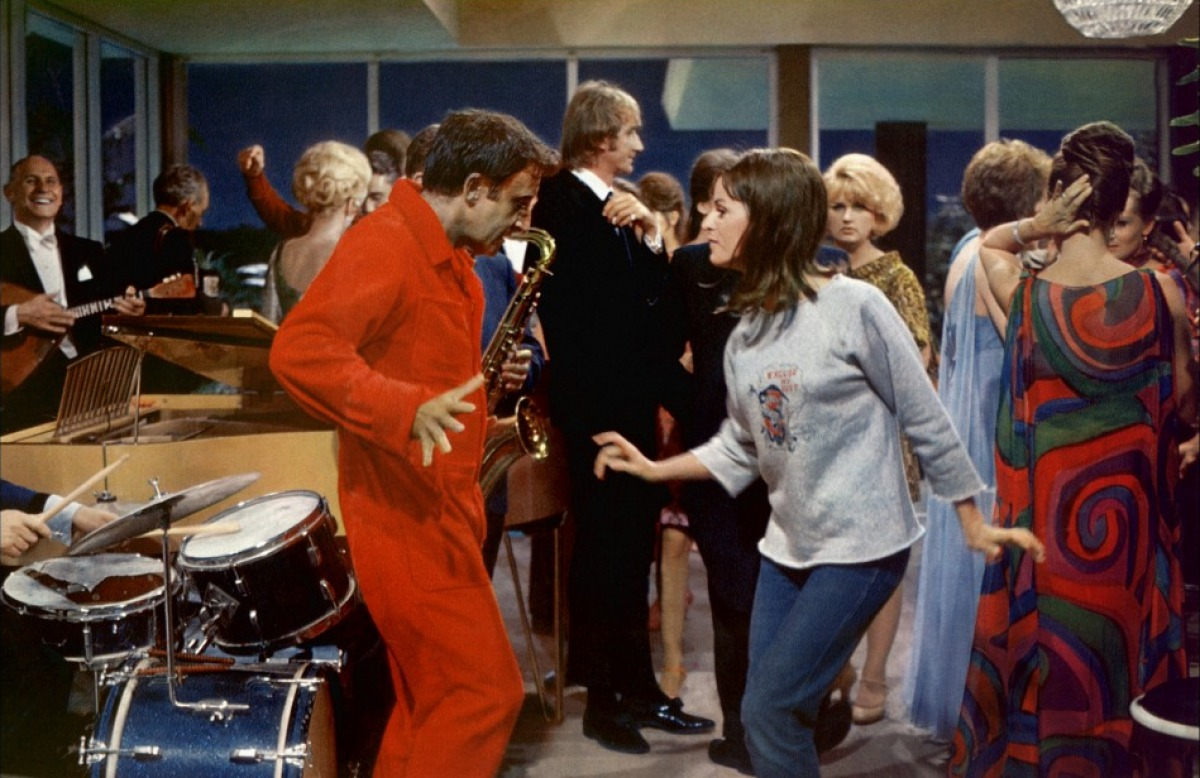
After his buffoonish antics trigger the explosion of an expensive film set, Hrundi V. Bakshi (Peter Sellers in brownface), the main protagonist in Blake Edwards’ 1968 comedy The Party, is seen playing the sitar in his room. There, he receives an invitation to an exclusive party. This unexpected turn of events is the result of a serendipitous mistake: looking to blacklist Hrundi for ruining his costume film, irate studio mogul General Fred Clutterbuck (J. Edward McKinley) has, ironically, countered Hrundi’s sloppiness with his own, inadvertently scribbling down his name onto the guest list for his wife’s party. After Hrundi receives the invitation, the music from his sitar becomes electrified into the then-new genre of raga rock and the credits begin to roll.
Coupled with the opening scenes, in which an Indian actor demolishes an exoticised, neo-colonialist image of India, this musical transition could be read as a commentary on appropriation – especially since the character who destroys these orientalist constructions is played by a British actor. The film’s clichéd characterisation of an Indian man – with a kooky accent, exaggerated gestures, and a fondness for meditative spirituality – comes across as a pastiche of Hollywoodian construction, and the object of the film’s critique and mockery therefore seems to be not the Indian man, but Hollywood itself. My heart sank, then, when the following scenes did not continue this meta-critique – I wondered if my favourable interpretation of those early sequences might have simply stemmed from my hope of seeing something more profound.
However, and although the film does not reach these metatextual heights, its use of its central Indian character is more sophisticated than it may initially seem. For all that is “problematic” or even disturbing about The Party, the film never actually makes its protagonist the butt of the joke. Rather, Edwards uses this Indian character’s outsider status as a vessel for his own ideas on chaos and connection.
Hrundi’s presence at the party sets off a chain of events culminating in all-consuming destruction, each gag a further blow to the meticulous organisation of the mogul’s modernist mansion. The opening scenes around the film set therefore constitute a microcosm of the ensuing chamber comedy: disorder disrupts Hollywoodian order first in art, on the film set; then in life, at the titular party. For Edwards, though, the two realms are essentially one and the same, and through the course of its eccentric character study, The Party also provides a history of Western cinematic comedy – from the silents to Jacques Tati. Squaring both classical and modernist comedic impulses, the film shows a possible direction for comedy. Finally, it also works as a piece of film criticism, allowing the seemingly conflicting forces of destruction and connection, superficiality and sincerity, and comedy and pathos, to co-exist.
While The Party lampoons Hollywood (though it is obviously lacking on the racial front; more on this later), its premise is rooted in a common anxiety: that of feeling alienated at parties. Peter Sellers’ “Indian” is an outsider to both Hollywood and America. His good English and knowledge of American cinema are not enough to insulate him from the fads and doodads of a rapidly transforming American landscape (some trends, particularly rock and roll music, as well as its associated hairstyles and fashion, did trickle down to the Indian commercial cinema of that period, so one wouldn’t expect an Indian actor like Hrundi to be entirely clueless; but we may grant Edwards some poetic licence here). Hrundi’s alienation is particularly acute in an environment such as a Hollywood party – extremely snobbish to those who don’t fit in, and even to those who do. Aside from his cluelessness in operating outlandish modern gadgets, Hrundi is also less attuned to the rhythms of the music and the dancing techniques that go with them, the contrasting tics of the nouveau riche and the “nouveau” nouveau riche, or the bitter scorn of the horrible people repulsed by his presence. But this is exactly what endears him to us (a little more guardedly, in my case): Peter Sellers’ affable and gentle demeanour renders the rest of the crowd hollow and cruel, with Edwards (and us) rooting for their destruction.
Hrundi’s bumbling restlessness – established in the first sequence – is the initial source of comedy when he first enters the mansion. In an effort to appear presentable, he washes his shoes in the indoor pool, only to then be faced with the confusing setup of the modern house. In the pool are floatables designed like artificial lily pads, for those seeking to cross over without getting wet. Edwards pokes fun at the artificiality of the surroundings and the non-intuitive way they are decorated and designed, as the unusual layout of the room initiates a tightrope balancing act. Hrundi initially moves with Keatonian grace – until his shoe lands in the hors-d’oeuvres. Having paid homage to one giant of comedy, Edwards duly proceeds to honour another a few moments later, filming Hrundi awkwardly standing alone amidst a hostile crowd, and his painful stabs at conversation with condescending guests. Generating a sense of pathos à la Chaplin, though with less sentimentality, Edwards therefore establishes our kinship with Hrundi, before proceeding to take down the edifices of the uber-rich, one gag at a time.
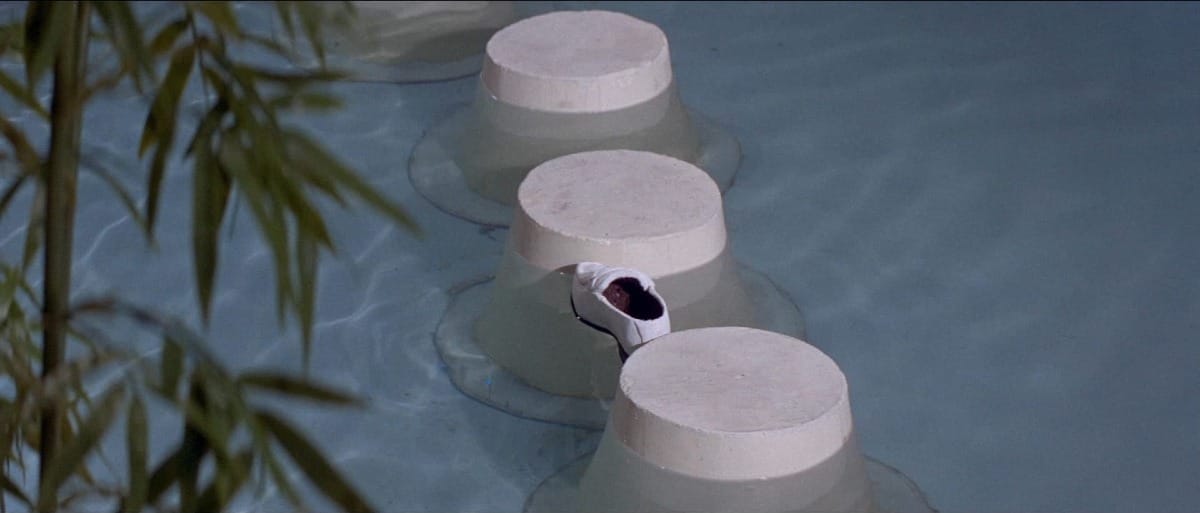
A great deal of critics have described the following sequences as Tatiesque, and Edwards borrows gags from Mon Oncle (1958) and Playtime (1967) to highlight Hrundi’s ineptitude with technology as well as rich people’s pompous attention to appearances. However, the director’s remarkable attention to spatial planes, the divisions demarcating two spaces (doors in particular), and the way events in the background subtly alter those in the foreground, take this seemingly Tatiesque comedy in a completely different direction. In Tati’s films, chaos is reined in by those who have initiated it themselves: Tati’s humanistic philosophy conceives of people as neither successes nor failures, but as agents able to miraculously adapt after their own mistakes, somehow surviving modernity through an ingenuity that compensates for their bewilderment. As Serge Daney put it, Tati does not need an explosion of chaos because, in his films, chaos always leads to order, and vice-versa. The Party, on the other hand, careens towards catastrophe, with every gag more destructive than the last. Edwards gleefully revels in this outrageous disruption of a bourgeois order that congratulates itself on its comportment and consumption of products. The Party exposes the rich for their hollow ideals and fanatical devotion to appearances through every gag that results from Hrundi’s blunders. It isn’t surprising that many of these gags involve food (the shoe in the hors d’oeuvres, the chicken falling on a woman’s luxuriant wig), as the stuffy standards of the rich are intertwined with their rampant consumption, which Edwards lampoons with relish.
I have so far avoided writing much about The Party’s glaring brownface while discussing its detailed form and ethos, but I couldn’t avoid thinking about it while watching the film. For most of the film’s admirers, and I include myself among them, the element of brownface is mentioned as a mere disclaimer, an acknowledgement of the film’s racial stereotyping often accompanied by the preposition “despite” – as these sentences usually go, they are usually followed by an explanation of how the film “redeems” itself. I have done the same when it comes to thinking about a lot of the “problematic” art I love, but here, the connection is a lot more personal, as I am Indian myself. The points raised by these critics are valid: the jokes are targeted towards the rich and, as I have myself pointed out, Hrundi is among the few sympathetic characters in the entire film. His Indianness itself is not mocked, nor is attention drawn to his differences, at least for a considerable portion of the film. Compared to the snake-charmer exoticism of the overrated Black Narcissus (1947) and the bland stereotypes of The Simpsons (1989-), The Party is not only a step up, but it is also respectful of its Indian character, even as it perpetuates some stereotypes. I can even get behind the casting of Sellers, whose singular talent for playing outsiders is key to the film’s ethos, though I would rather he didn’t play an Indian character (and it is hard to imagine Hollywood then or now casting an Indian actor in the role). So why am I still wrestling with this film, unable to consign it wholeheartedly to the rarefied company of great problematic art?
Watching The Party raised questions for me about the disparate ways of processing the art made by different people. I have always wondered, in a rather passive way, about how women process misogynistic art, or how Native Americans perceive the films of John Ford. Or, to hit even closer to home, how oppressed castes in India engage with (some of their) art being appropriated, propagated, and often sanitised by the dominant castes (many more such examples abound). But The Party has inadvertently pushed these questions to the forefront of my film criticism. It has introduced concerns in me which I believe are less likely to be raised by well-meaning progressive individuals of other nationalities. For instance, the famous set of sequences involving Hrundi’s herky-jerky movements and awkward contortions as he controls his urge to urinate made me squirm with anxiety, worried that the film might tastelessly show Hrundi urinating in the house and therefore perpetuate the prevailing stereotypes about India’s lack of hygiene. I probably wouldn’t have cared so much if I didn’t admire the film’s exceptional form, and I heaved a sigh of relief when it didn’t confirm my fears. Additionally, although I could see that the film was sympathetic to Hrundi, I couldn’t trust it entirely because of its shameless use of brownface. This naturally begs the question: are these anxieties unique to the viewers belonging to the social category unfairly represented on screen? Or do others outside of that group share them, too?
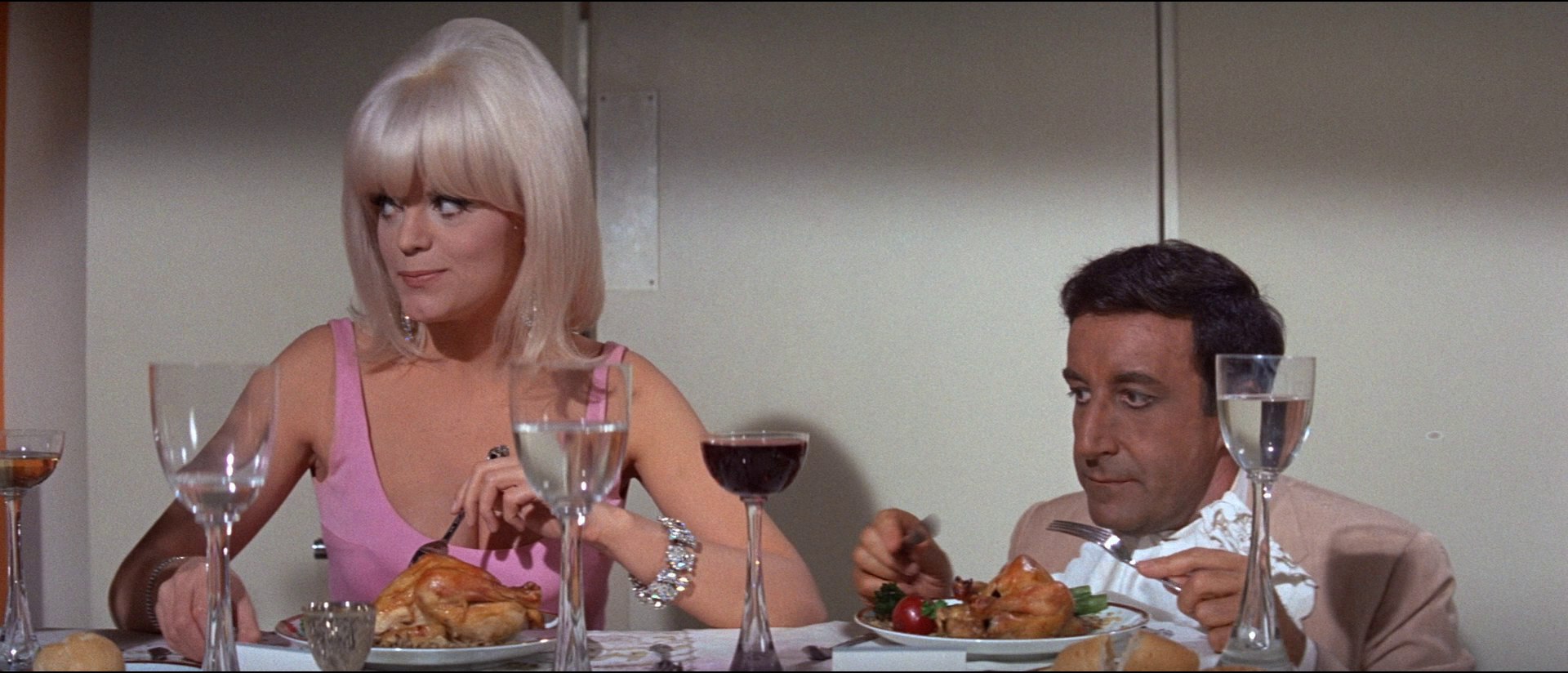
Perhaps the political climate in India – where a quasi-fascistic party brandishes its idea of nationalism, spews hatred for non-Hindus and lower “castes”, and demands total conformism – makes it even more difficult for me to watch Indian characters without scrutinising them for stereotypes. The fact that Indian politics and discourse today revolve so much around the idea that certain kinds of Indian people have a greater claim to India than others, might make it harder for me to stomach the way Hollywood conceives of Indian people in general. Viewers who are less aware of the current debates around Indian identity, or of its diversity (which was of course already a reality when The Party was made), may be less able to identify the finer nuances of stereotypical characterisation when they see it. The Indian person in Hollywood films is always a combination of the homogenous Indian propagated by fervent nationalists, and Hollywood’s kooky alterations of the same. Hrundi in The Party is no exception. The film’s sympathy for the character emerges through, among other things, quasi-nationalistic dialogue: the line “In India, we don’t think who we are, we know who we are!” was a favourite of one of our prime ministers, Indira Gandhi. Hrundi is also given the immutable, stereotypical Indian accent – one example among many of Hollywood’s failure to acknowledge diverse accents in India, a problem also seen in portrayals of Arabs, Italians, Chinese people, and other ethnicities. Not that Bollywood and other Indian film industries are free from stain: they, too, gleefully perpetuate cliches about other states and communities. Finally, allusions to Indian culture are plentiful, and often participate in the continuation of a gag. In one scene, an elephant painted with slogans is brought in by Clutterbuck’s daughter, which Hrundi feels is disrespectful of his culture. While this might seem to at least partially absolve the film for its use of stereotypes, it actually does the exact opposite: circus elephants are, in fact, present in India, and are painted as well. This flippant invocation of Indian culture provides an excuse for chaos to reign supreme, as the cleaning of the elephant culminates in the flooding of the entire mansion, with all sense of propriety washed off in a cartoonish catastrophe.
Although deemed unfunny by many critics, the following sequences of mayhem are where Edwards does, if not redeem himself, then, at least present his protagonist as a more well-rounded human being, by fostering a connection out of the ensuing chaos. The only character kind to Hrundi in the film is another outsider, Michelle (Claudine Longet). An actor, she is accompanying a producer at the party in the hopes that he will help her career. The producer, expecting his desires to be fulfilled, tries to force himself on her, only to be interrupted by Hrundi. This isn’t exactly a heroic moment for our protagonist, but it brings together the two outsiders, who had only been sporadically conversing up to this point. The loneliness and pathos latent in the previous sequences are now brought to the fore, with the comedy taking a back seat even as long shots show the party’s comical collapse. Rather than mock Hrundi for his “outdated” moves, Michelle gently teaches him the dance more appropriate to the era. As the surrounding guests’ behaviour becomes more and more cartoonish, Michelle and Hrundi’s connection develops. “There always comes a point in Edwards when the slapstick stops being funny and folds back on itself, revealing the pain behind the façade. To me, that’s not a flaw but one of the elements that makes him a great filmmaker,” wrote American curator and critic Dave Kehr, discerningly, in response to American writer Jonathan Lethem’s comments on how unfunny he found these sequences. After all this chaos, when Hrundi drops Michelle at her home and they tenderly flirt with each other, I found I could keep in mind my concerns with the film’s use of brownface all the while seeing Hrundi as a character in his own right for the first time. For all my musings on problematic art and the questions it raises, I can’t think of a better defence for engaging with it than the final scenes of The Party.
New episodes of Hard Truths drop every two weeks.


